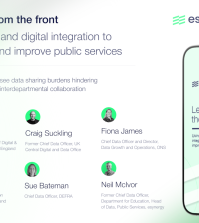The civil service wants to reduce sickness absence and the bullying of disabled people. Here’s one solution

In September, cabinet secretary Jeremy Heywood raised concerns about “the harassment and bullying data we get from our people survey from people with disabilities”, whilst last month’s Spending Review announced a review of the “current systems for managing and compensating for sickness”. These two problems are closely linked – and at a time of intense pressure on resources, the government is missing opportunities to quickly improve performance in both areas.
I’ve spent more than two decades helping employers to get the best out of their workforces, and during that time I’ve seen many organisations under financial pressure fall prey to a common set of problems. As jobs are cut, some of the most readily-employable staff take voluntary redundancy, leaving behind those less confident of finding another job – including older and disabled staff. Indeed, the number of civil servants with a declared disability has actually increased since 2013, even as the overall size of the workforce falls.[1]
Unfortunately, most organisations struggle to provide disabled people with the assistive technologies and supportive environment required to maintain their morale and maximise their productivity. Employers pass the costs of providing ‘reasonable adjustments’ onto team leaders and the tasks of supplying them to HR, facilities management and IT teams – who often lack the necessary expertise and view the responsibility as a expensive inconvenience. So adjustments are provided slowly, with poor coordination, whilst fear of stigmatisation deters too many from asking for the practical adjustments that could help them do the best possible job.
With inadequate support, disabled people often find it hard to cope with rising workloads, growing stress levels and organisational change – and as teams come under ever-more pressure, they take more time off sick. This in turn can foster resentment among other team members, making a return to work more difficult and exacerbating bullying, low morale and mental health problems. In the worst cases, relationships and health problems deteriorate until staff go on long-term sick leave or take grievances to an employment tribunal.
In this way, the pressures on organisations whose incomes are falling can expose the weaknesses in their management of disability, leaving them with a growing cadre of disabled employees experiencing increasing sickness absence, low morale and bullying. So at exactly the time when employers need to be getting the most out of their people, they experience downward pressures on staff engagement, team spirit and productivity.
It doesn’t have to be like this. Organisations that gather in the scattered tasks of managing disability and centralise them within a dedicated unit can meet the needs of disabled staff much more quickly and effectively – helping them to remain productive and averting that downward spiral. Crucially, the funding of adjustments must pass from line managers to a central pot, helping to change managers’ attitudes to disabled staff. And the new service must be available to everyone, not just those with a declared disability: this both reduces stigmatisation, and encourages all those with a long-term physical or mental condition to participate – improving productivity across the workforce. Many people suffering from problems such as back pain, dyslexia and anxiety don’t consider themselves disabled; but when they’re helped to minimise these problems, their attendance records, morale and productivity improve significantly.
These dynamics hold true in small and large organisations, and across the private and public sectors: I’ve seen similar patterns in small businesses and in Lloyds Banking Group, my biggest client with 100,000 people. And at the moment, with administrative spending set to fall by about a quarter and £12bn coming out of resource budgets, the civil service must get the most out of every one of its people.
Without concerted and systematic action, there’s a real danger that sickness absence, bullying and lost productivity will become an ever-worsening problem. But with the right policies and the necessary disability expertise, government could both relieve the burden on hard-pressed support functions, and help every civil servant to fulfil their full potential – fostering happier teams, better staff engagement, falling sickness absence and strengthened productivity.
After the painful trade-offs of the Spending Review, this is a potential win-win. And right now, the civil service needs all of those it can find.
Dr Nasser Siabi OBE is the chief executive of assistive technology specialists Microlink PC.
To learn more about Microlink, email [email protected], visit www.microlinkpc.com or call 02380 240 398
Transformation at Lloyds Banking Group
In 2010, Microlink began offering a unified workplace adjustments service to all the staff at Lloyds. Management information and survey data reveals some of the results.
Proportion of line managers reporting an increase in performance after employees use the service: 85%
Working days lost due to long-term health conditions among 800 staff during the year prior to their accessing the service: 9,700
Working days lost due to long-term health conditions among the same 800 staff during the year after accessing the service: 850
Saving over the year after service provided to these 800 staff: £500,000
[1] According to ONS statistics – for more see www.microlinkpc.com/news/civil-service-disability-rates-on-the-rise

















